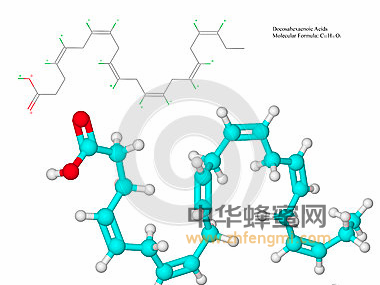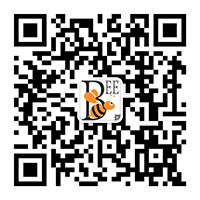蜂蜜文献
高效液相色谱-串联质谱法测定蜂蜜中的5种双稠吡咯啶类生物碱
[ 2/7 ]
2016年04月25日 17时06分59秒 来源: 互联网
导读:建立了强阳离子固相萃取-高效液相色谱-串联质谱法用于测定蜂蜜中野百合碱、克氏千里光宁、倒千里光碱、千里光菲啉和千里光宁等5种双稠吡咯啶类生物碱。
Abstract:A liquid chromatography-tandem mas spectrometry (LC-MS/MS)method was developed for the determination of five pyrolizidine alkaloids(PAs)(monocrotaline,senkirkine, retrorsine,seneciphyline and senecionine)in honey.The honey samples were disolved in 0.1 mol/L hydrochloric acid solution and a strong-cation exchange column was used to purify and concentrate the target analytes.The separation of the analytes was caried out on a Phenomenex C18 column(100 mm×4.6 mm,2.6μm)using the mobile phases of acetonitrile and 5 mmol/L am- monium acetate-0.1%(volume percentage)formic acid aqueous solution with gradient elution. The separated compounds were detected in multiple reaction monitoring (MRM)mode via posi-tive electrospray ionization (ESI+ ).The calibration curves were of good linearity in the range of 1-100μg/L (r>0.99).The limit of quantification of the method was 1.0μg/kg.The average recoveries were betwe en 73.1 % to 107.1 % at thre e spiked levels (1 ,20 and 50 μg/kg ) with the elative standard deviations(RSDs)in the range of 4.1% to 17.0%.The proposed method was ap- plied to diferent kinds of honey from China,New Zealand,Spain and Australia.The samples in- cluded rape,vitex,sunflower,coton,tilia tre,date,acacia,buckwheat,manuka and eucalyp- tus honey.Monocrotaline,senkirkine and retrorsine were not detected in the colected honey samples.However,seneciphyline and senecionine were found in most of the honey samples.The concentrations of seneciphyline and senecionine were 11.0-31.1μg/kg and 8.3-29.1μg/kg, respectively.
Key words:liquid chromatography-tandem mas spectrometry (LC-MS/MS);pyrolizidine alkaloids (PAs);honey
双稠吡咯啶类生物碱(pyrrolizidinealkaloids,As)存在于世界上6000余种有花植物当中,包括紫草科、菊科和豆科等多类植物[1]。PAs大多数是由具有双稠吡咯啶环的氨基醇和不同的有机酸两部分缩合形成,长期食用含有PAs的食品会导致肝硬化、肺结核、癌症等疾病[2,3]。PAs中毒是慢性过程,不易引起人们的注意。2012年10月欧洲药品管理局发布公告[3],列举了一些国家对双稠吡咯啶类生物碱每日容许摄入量的要求:1992年,德国规定PAs日均摄入量不能超过1μg,且每年摄入时间不能连续超过6周;2001年,澳大利亚和新西兰的食品标准规定PAs日均摄入量不得超过1μg/kg(体重);2007年,荷兰国家公共卫生及环境研究院规定PAs日均摄入量不应超过0.1μg/kg(体重)。自然界中,蜜蜂在采集花蜜过程中会误食含PAs的植物,从而导致PAs随食物链进入蜂蜜当中,而消费者长期食用含有PAs的蜂蜜会产生毒副作用。
目前双稠吡咯啶类生物碱的检测方法主要是液相色谱法。其中常用的检测器包括紫外检测器[4,5]以及质谱检测器[5-11]。由于PAs是双稠吡咯啶环的氨基醇和不同的有机酸两部分缩合形成,无共轭体系,紫外吸收不强。尽管高效液相色谱-紫外检测法可以对PAs进行测定,但是检测灵敏度较低,抗干扰能力弱,不能完全满足检测需求。相比其他检测方法,高效液相色谱-串联质谱法具有定性和定量准确等特点,已广泛应用于各类生物碱的检测[12,13]。国外已有研究各类植物[5-8]和蜂蜜[9-11]中双稠吡咯啶类生物碱的检测方法,但国内相应的研究除了基本的毒性报道之外,还没有对应的检测方法报道。本文建立了蜂蜜中5种双稠吡咯啶类生物碱的检测方法,并对国内8种天然蜂蜜和新西兰、西班牙和澳大利亚等国家的3种蜂蜜中5种双稠吡咯啶类生物碱的含量进行测定,为监管部门有效监控产品质量提供了技术和数据支持。
更多你需要的文章请点击: 蜂蜜
色谱
生物碱
蜂蜜成分
蜂蜜的作用与功效
吕晨
李丽
本文链接:https://www.zhfengmi.com/show/32-922.html [复制] (转载请注明出处、保留链接)
本文手机链接:https://m.zhfengmi.com/show-32-922-p2
本文手机链接:https://m.zhfengmi.com/show-32-922-p2




